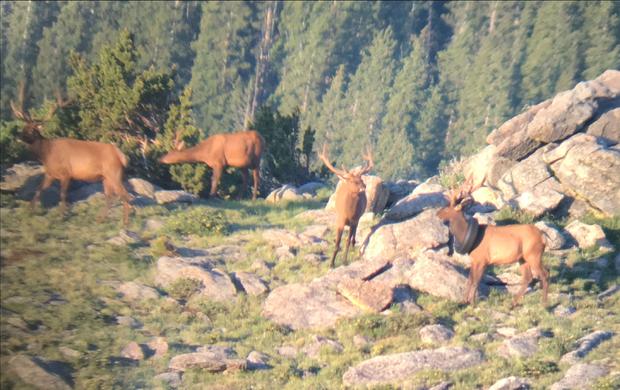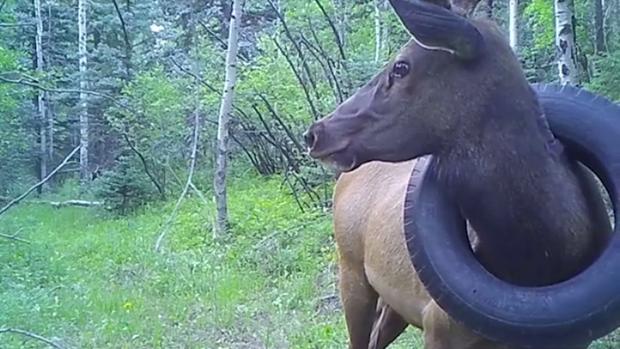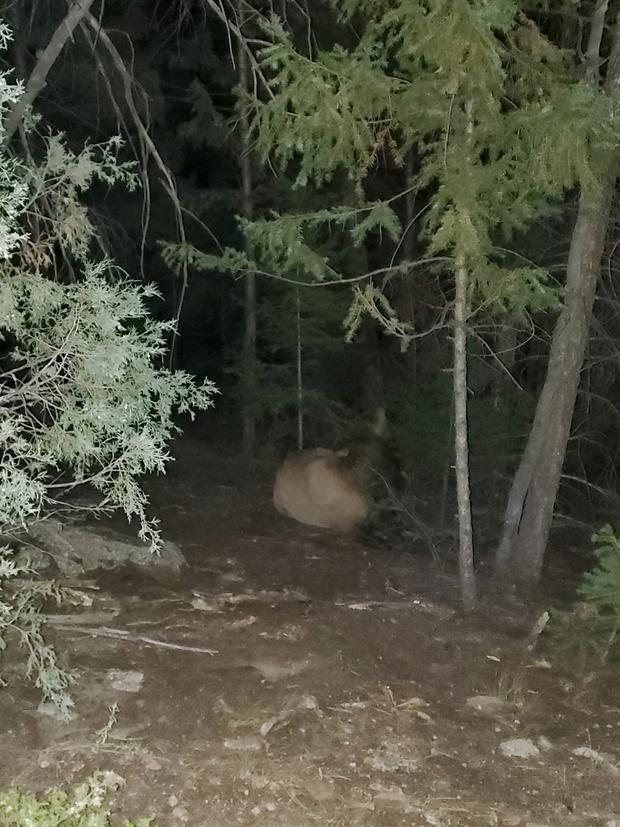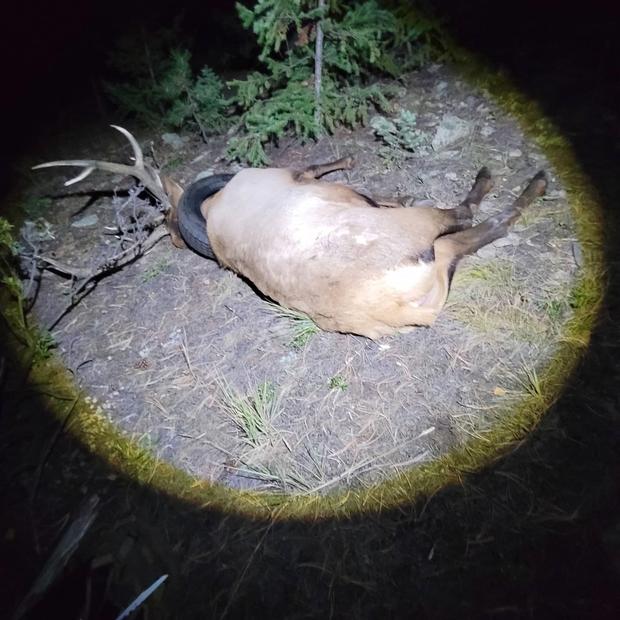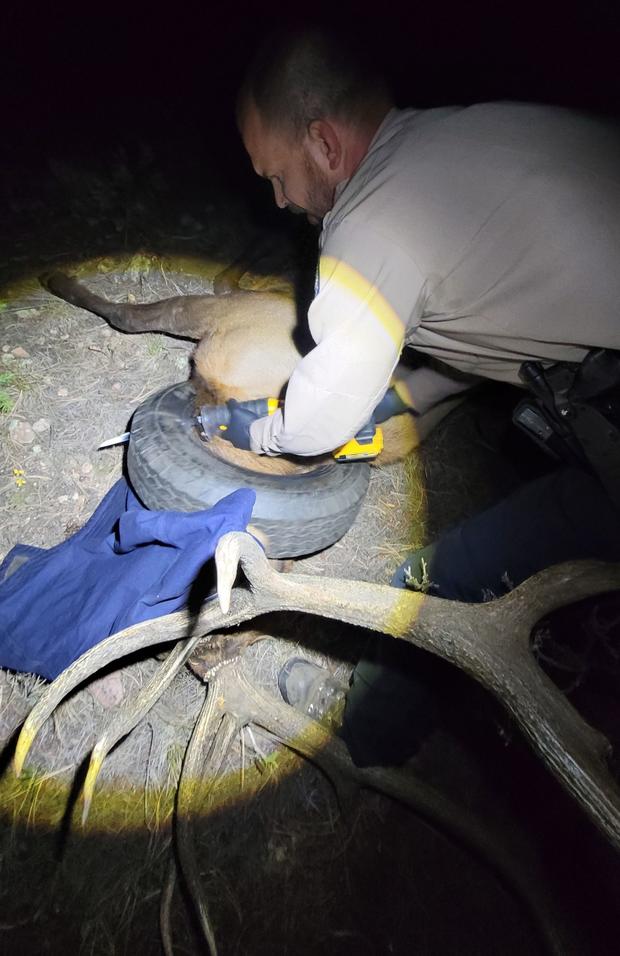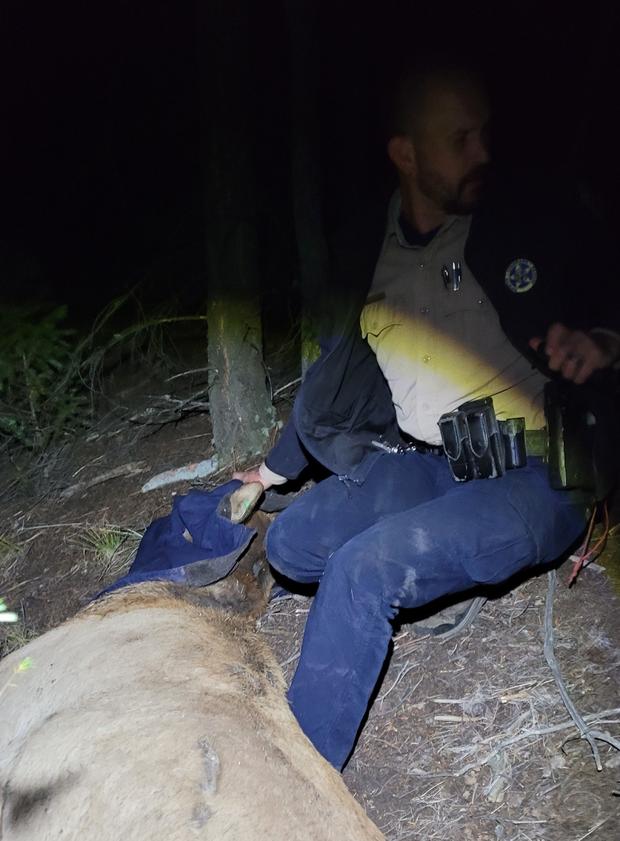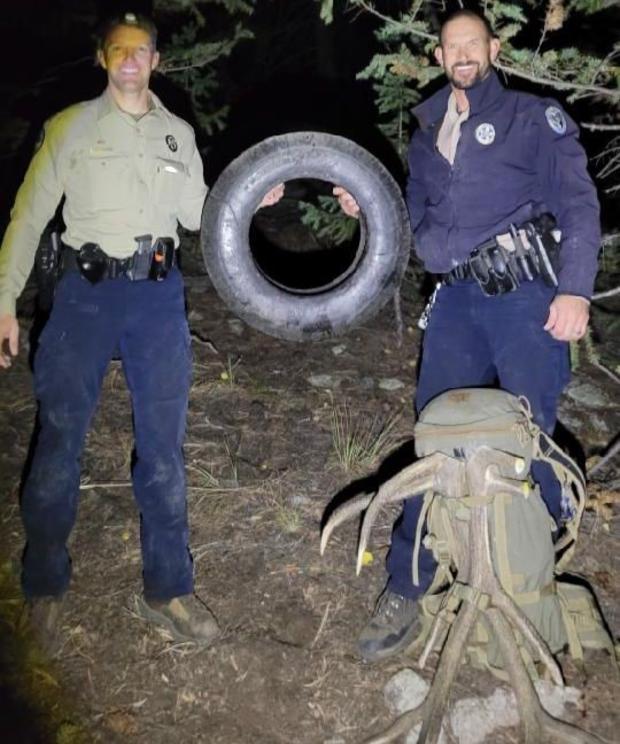Wildlife Officers Remove Tire That Elk Wore Around Its Neck For 2 Years
PINE, Colo. (CBS4) - After numerous failed attempts, Colorado Parks and Wildlife officers caught up with a bull elk that had worn an old tire around its neck for approximately two years.
The elk was spotted in July of 2019 with the cumbersome necktie but evaded capture until Saturday night.
That's when Patrick Hemstreet called CPW's Dawson Swanson and said, "He's in my yard right now."
"(Swanson) said, 'I'm on my way,'" Hemstreet recalled.
This particular bull elk spent a significant amount of time in Hemstreet's neighborhood off Pine Valley Road (Jefferson County Road 126) in the years since adorning himself with the radial.
"I'd see him in my yard all the time," Hemstreet said. "We felt bad for the thing."
That was the case Saturday, too.
CPW's Swanson had tried four times in the past week to get within tranquilizing range. And like previous attempts, the "tired" elk ran into the woods with his group of 40 others when Swanson came near.
This time, Swanson swore, would be different. Swanson drove ahead of the pack to a neighbor's property and estimated where the elk might cross a road. They did.
He successfully darted the bull.
"Tranquilizer equipment," Dawson stated in a CPW press release, "is a relatively short-range tool and given the number of other elk moving together along with other environmental factors, you really need to have things go in your favor to have a shot or opportunity pan out. I was able to get within range a few times that evening, however, other elk or branches blocked any opportunities. It was not until shortly before dark that everything came together and I was able to hit the bull with the dart. Once the bull was hit with the dart, the entire herd headed back into the thick timber."
Hemstreet said Swanson knocked on his door minutes later: "I could use your help tracking him."
The pair worked together the next four hours.
"We were about to give up and Officer Dawson spotted him," Hemstreet said. "We were going to saw the tire off. We tried, and we just couldn't do it."
The sedative began to wear off, so Dawson called for more. Another CPW officer, Scott Murdoch, delivered it.
"We would have preferred to cut the tire and leave the antlers for his rutting activity," Murdoch said, "but the situation was dynamic and we had to just get the tire off in any way possible."
"It was tight removing it," Murdoch added. "It was not easy for sure, we had to move it just right to get it off because we weren't able to cut the steel in the bead of the tire. Fortunately, the bull's neck still had a little room to move."
The elk's neck was in remarkable good condition.
"The hair was rubbed off a little bit, there was one small open wound maybe the size of a nickel or quarter, but other than that it looked really good," Murdoch said of the bull's neck. "I was actually quite shocked to see how good it looked."
Swanson and Murdoch estimated that the bull elk dropped roughly 35 pounds between the removal of the tire, his antlers and the debris that was inside the tire.
"The tire was full of wet pine needles and dirt," Murdoch said. "So the pine needles, dirt and other debris basically filled the entire bottom half of the tire. There was probably 10 pounds of debris in the tire."
As bad as Hemstreet felt for taking the elk's antlers during mating season, he knew there was definitely a tradeoff.
"There's negatives and positives, right? He's not going to be targeted by hunters right now."
As CPW explained in its press release, this bull elk spent the past couple of years traveling back and forth between Park and Jefferson Counties. He disappeared for long periods of time, particularly in the winter, and was acting as expected from a wild animal, not wanting to be around human presence. That is much different than some of the resident elk people often see in towns such as Evergreen or Estes Park.
"Being up in the wilderness, we didn't really expect to be able to get our hands on the elk just because of the proximity or the distance away from civilization," Murdoch said. "It is harder to get the further they are back in there and usually the further these elk are away from people, the wilder they act. That certainly played true the last couple of years, this elk was difficult to find, and harder to get close to. In the winter we weren't getting any reports of him. In the springtime, we would get an occasional report or see him in a little bachelor herd. The rut definitely made him more visible. There was a bigger bull in the group he was with on Saturday, but he is getting to be a decent size bull."
Wildlife officers aged the bull as a four-and-a-half year-old weighing over 600 pounds. The antlers had five points on each of the beams.
CPW spokesman Jason Clay said the agency is discussing the possibility of mounting the antlers for display - with the tire around them - as an educational tool.
The saga of this bull elk highlights the need for residents to live responsibly with wildlife in mind, CPW wrote in a statement. That includes keeping your property free of obstacles that wildlife can get tangled in or injured by. Wildlife officers have seen deer, elk, moose, bears and other wildlife become entangled in a number of man-made obstacles that include swing sets, hammocks, clothing lines, decorative or holiday lighting, furniture, tomato cages, chicken feeders, laundry baskets, soccer goals or volleyball nets, and yes, tires.
CPW recommends that if you see wildlife entangled in something or with debris wrapped around it, that you report it immediately to wildlife officials.
Looking back, Hemstreet felt "pretty amazed. I couldn't believe I could be a part of that. I was pretty relieved for him."
Hemstreet's wife, Lisa, said she excited to see the bull return to their yard.
He won't be wearing a tire, but they should be able to pick out him out of the crowd.
"He has two lovely green earrings," Hemstreet said.
